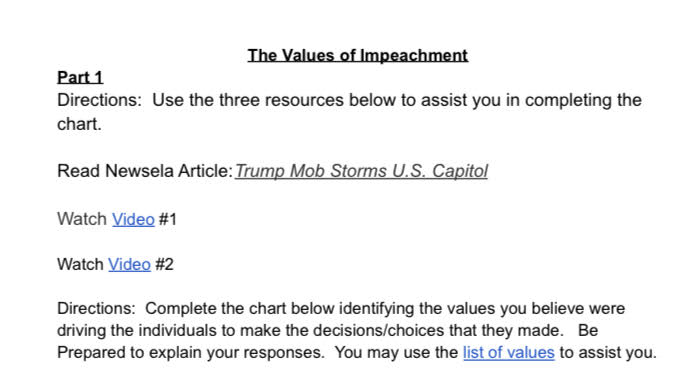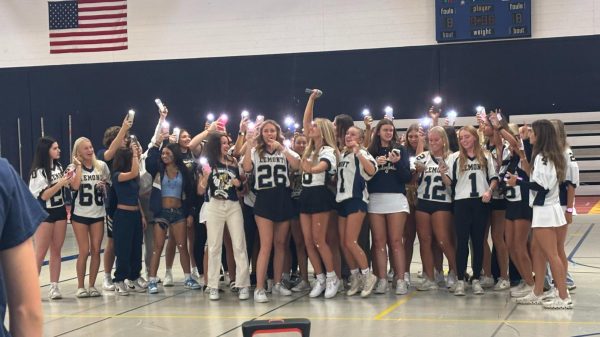Teaching during trivial times
Photo by Nour Longi. In the class American Problems, students were assigned an assignment in which they were tasked with attributing certain values with the people who stormed and capitol and the lawmakers involved. “The assignment was a great unbiased way to look at the situation,” said senior Michael Haughey.
January 29, 2021
It’s 2021, and the United States’ political climate is still burning: Joe Biden has been inaugurated as the 46th President, along with the first female, first black, first South Asian Vice President, Kamala Harris. But this happened after former President Donald Trump refused to concede and falsely claimed election fraud, his supporters to storm the capitol armed, and Trump getting impeached for the second time. This was all January.
With heighting polarization, everything from masks to statistics has a side.
In a survey of 156 students, 41.2% reported they supported Biden and 41.2% reported supported Trump. Students also expressed a lot of strong opinions:
“Trump is a gross vile person.”
“Joe Biden sounds illiterate.”
“Trump forever!”
It is safe to say classrooms are not immune to the rise in polarization— making teaching during these times a trivial task. How do you teach these events without evoking unrest among students?
Teachers can not simply avoid talking about these topics. The Illinois Department of Education actually mandates that students learn to discuss controversial topics in Social Studies Civics courses.
Rick Prangen, the head of the history department, said “As a department we’ve really tried to remain as unbiased as possible, we try to be conscious of not putting our opinions in the class.”
The aim of most discussion-based classes like “Human Rights and World Affairs” is to put it simply, have discussions. “However students sometimes get a little confused because I often play devil’s advocate, I am not disposing of my personal viewpoint, I am disposing of a viewpoint.”
The philosophy a lot of teachers adopt is to present information to students, and let them come to their own conclusions. In “Human Rights and World Affairs,” a lot of the content is focused globally. Because of this, students can formulate opinions and conclusions easier, but when the conversation is about the United States that’s when students start having a hard time.
Prangan explains behind polarized issues there is a lot of emotion and passion. So, when people detect the slightest bit of bias, they automatically assume malintent or attack.
The truth is there is bias in everything. That’s where the English department comes into play.
Caralyn Forde, AP Language and Composition teacher, explains the English department’s curriculum has a “perceptions versus reality” unit in which students learn to recognize bias in media and everyday life.







